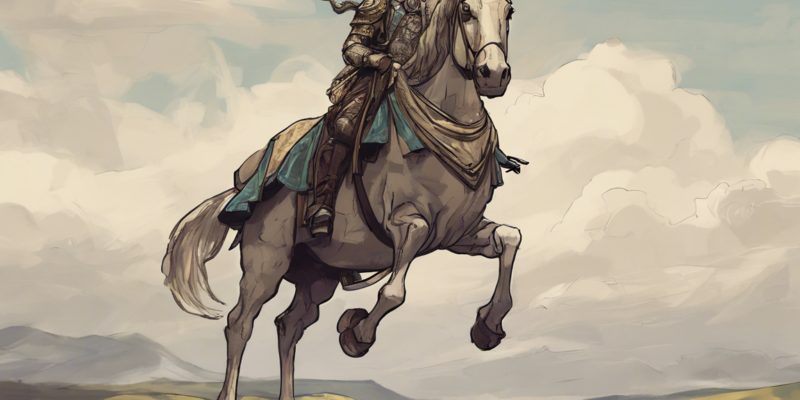Horseback riding – a centuries-old activity that evokes images of freedom, connection with nature, and the thrill of adventure. For many riders, the experience of embarking on a journey astride a majestic creature is unparalleled. Whether you’re a seasoned equestrian or a newcomer to the world of horses, horseback riding offers a unique blend of physical exercise, mental stimulation, and emotional connection. In this comprehensive guide, we’ll delve into the nuances of horseback riding, exploring its benefits, techniques, equipment, and safety considerations.
The Benefits of Horseback Riding
Physical Health
Beyond the joy of interacting with these magnificent animals, horseback riding provides a range of physical benefits. It engages various muscle groups, including the core, legs, and back, improving balance, coordination, and strength. The rhythmic motion of riding promotes flexibility and can help enhance posture.
Mental Well-being
The serenity of the outdoors, combined with the bond formed between rider and horse, can have profound effects on mental well-being. Horseback riding is known for reducing stress levels, boosting mood, and instilling a sense of calmness. The focus required to communicate effectively with the horse can also improve concentration and mindfulness.
Emotional Connection
Horses are highly intuitive animals that respond to human emotions. Through horseback riding, individuals can develop empathy, communication skills, and trust. The bond that forms between rider and horse is based on mutual respect and understanding, fostering emotional growth and connection.
Getting Started with Horseback Riding
Equipment
Before embarking on your horseback riding journey, it’s essential to have the right equipment. This includes a well-fitted riding helmet, comfortable riding boots, and appropriate riding attire. A saddle, bridle, and grooming tools are also necessary for a safe and enjoyable riding experience.
Riding Techniques
Learning proper riding techniques is crucial for both the rider’s and horse’s safety. Key skills to master include mounting and dismounting, correct posture and balance, steering, stopping, and controlling the horse’s speed. Beginners should start with basic riding lessons to develop a solid foundation.
Safety Considerations
Safety should always be a top priority when engaging in horseback riding. Riders should follow all safety guidelines provided by the instructor or riding facility, such as wearing protective gear, staying alert and focused while riding, and respecting the horse’s boundaries. Regular maintenance of equipment and proper warm-up exercises are also essential.
Choosing the Right Horse
Selecting the right horse for your horseback riding experience is key to ensuring a positive and enjoyable connection. Factors to consider include the horse’s temperament, size, riding discipline, and experience level. A well-trained and compatible horse can enhance the rider’s learning experience and overall enjoyment.
Frequently Asked Questions (FAQs)
1. Is horseback riding suitable for beginners?
Yes, horseback riding is suitable for beginners of all ages. Starting with lessons from a qualified instructor is recommended to learn proper techniques and safety protocols.
2. What equipment do I need for horseback riding?
Essential equipment includes a riding helmet, riding boots, comfortable attire, a saddle, bridle, and grooming tools. Protective vests and gloves are also advisable for additional safety.
3. How can I improve my balance and posture while riding?
Practicing core-strengthening exercises off the horse can help improve balance and posture while riding. Engaging in regular riding lessons with a focus on body alignment and relaxation is also beneficial.
4. What should I do if I feel anxious or scared while riding?
It’s normal to feel nervous when starting horseback riding. Communicate openly with your instructor about your feelings, take deep breaths, and focus on building trust with your horse. Starting with calm, well-trained horses can also help alleviate anxiety.
5. How do I build a stronger bond with my horse?
Building a strong bond with your horse takes time, patience, and consistency. Spend quality time with your horse outside of riding, engage in grooming sessions, and practice groundwork exercises to establish trust and communication.
6. Are there different riding disciplines I can explore?
Yes, there are various riding disciplines to explore, such as dressage, show jumping, trail riding, Western riding, and polo. Each discipline offers unique challenges and rewards, allowing riders to diversify their riding skills.
7. What should I consider when caring for my horse after a ride?
After a ride, it’s essential to cool down your horse gradually, provide water for hydration, and check for any signs of discomfort or injury. Grooming and properly storing riding equipment are also part of post-ride care.
8. How can I continue to advance in horseback riding skills?
Consistent practice, continued riding lessons, and participation in clinics or workshops can help riders advance in their horseback riding skills. Setting goals, seeking feedback from instructors, and expanding your knowledge of horse care and training are also beneficial.
Conclusion
Horseback riding offers a blend of physical, mental, and emotional benefits that make it a truly unique and rewarding activity. By understanding the fundamentals of horseback riding, from equipment and techniques to safety considerations and horse selection, riders can embark on a fulfilling journey of connection, growth, and exploration. Whether you’re a casual rider or aspire to compete in equestrian sports, the bond formed between human and horse serves as the foundation for a remarkable riding experience. So saddle up, embrace the freedom of the open trail, and unleash the transformative power of the noble steed.


Comments